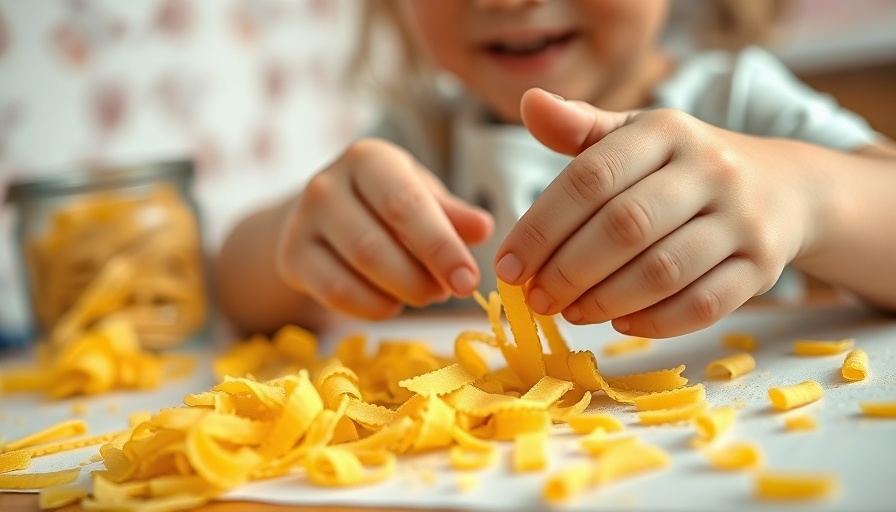
Get Creative: Using Spaghetti to Teach Letters
When it comes to teaching kids how to write their names, traditional worksheets can often feel boring or too structured. However, the innovative idea of using spaghetti for letter learning brings fun back into education! This hands-on, sensory-rich activity not only teaches kids the alphabet but also makes for an entertaining family bonding experience.
Why Hands-On Learning is Beneficial
As parents, we often seek out effective learning methods for our children. Engaging in hands-on activities is essential for young learners. Not only does it develop fine motor skills, but it also enhances cognitive functions. When kids are involved in creating spaghetti letters, they practice bending and shaping the strands, which strengthens their fingers and prepares them for future writing tasks.
Moreover, sensory play allows children to engage their senses fully. Holding warm, wiggly spaghetti in their hands provides tactile input that stimulates brain development. This form of learning forms new neural connections, which enhances their overall growth and learning capacity.
How to Set Up the Spaghetti Letter Activity
Setting up this activity is easier than you might think! You'll need just a few common items:
- Cooked spaghetti
- Marking paper
- Markers
- Clear plastic paper protectors (optional)
Start by cooking the spaghetti until it's just soft enough to manipulate without turning mushy. You want it to remain flexible but firm enough at the same time. To add some flair, you can dye the spaghetti with food coloring for a vibrant twist, or simply keep it plain for straightforward crafting. The goal is to keep the task focused on learning the letters of each child’s name.
Focusing on Letter Recognition
The beauty of the spaghetti letter activity is its versatility. Not only can it be tailored to different age groups, but it can also align with specific learning objectives. If your child is learning a particular letter that week, you can have them form that letter with their spaghetti. As they shape each letter, they not only improve their recognition and recall of the letter shapes but also reinforce the structure of their names.
For example, a child who is just learning to spell their name may benefit from this tactile activity. As they form the letters in their name, they’ll get instant feedback and reinforcement from their efforts, which is crucial for young learners. By tracing with spaghetti, they're setting the foundation for writing without the pressure of keeping it perfect!
The Emotional and Social Benefits
Beyond fine motor and literacy skills, playing with spaghetti letters fosters connection. These kinds of activities encourage social interactions. Parents and children arc engaged in meaningful conversations, share laughter, and bond during messy playtimes. How often do we as adults get to be involved in activities that allow us to let loose and explore creativity? This is a moment for parents to embody joy and play with their kids!
Conclusion: Make Education Fun!
Incorporating fun family activities like learning with spaghetti not only makes the educational process enjoyable but also ingrains vital skills in a memorable way. The next time you’re seeking out methods to teach your child their name and letters, consider this sensory-rich experience. It’s an opportunity to form meaningful memories with your little ones, all while fostering essential skills. So, grab that spaghetti, gather your kids, and dive into this creative learning adventure!
Ready to apply these ideas at home? Gather some spaghetti and redesign your family time with this hands-on, fun family activity!
 Add Row
Add Row  Add
Add 




Write A Comment